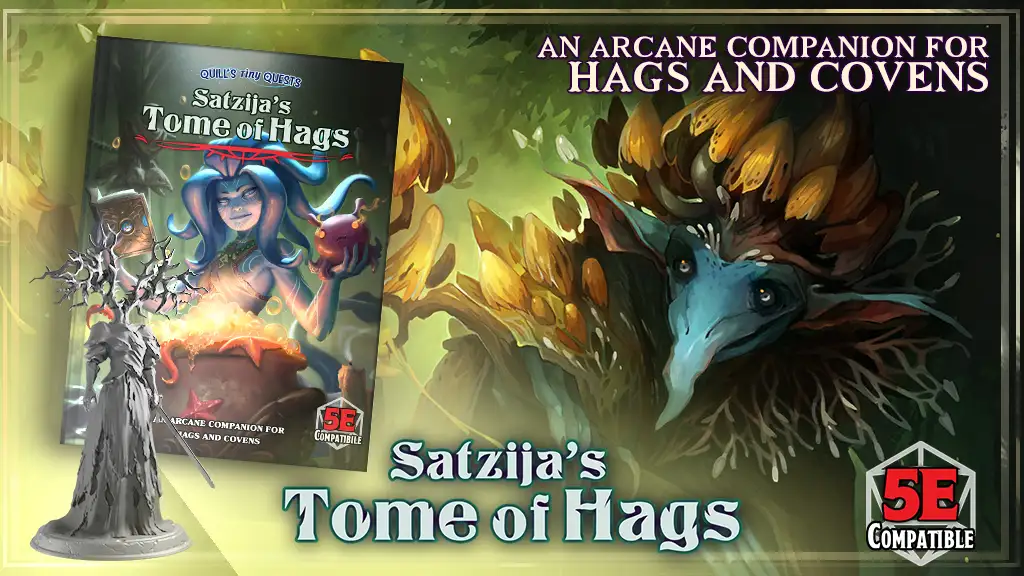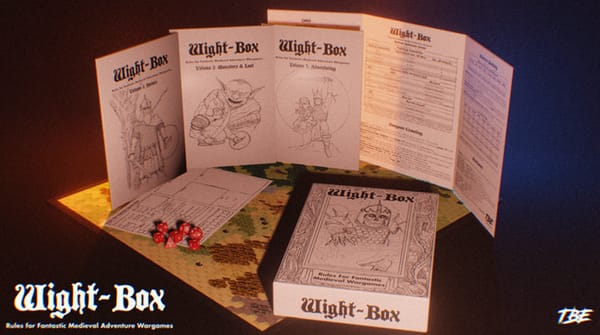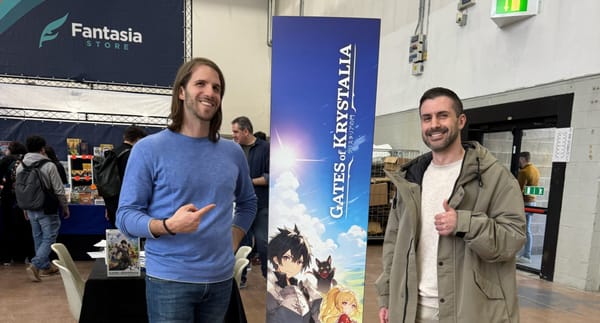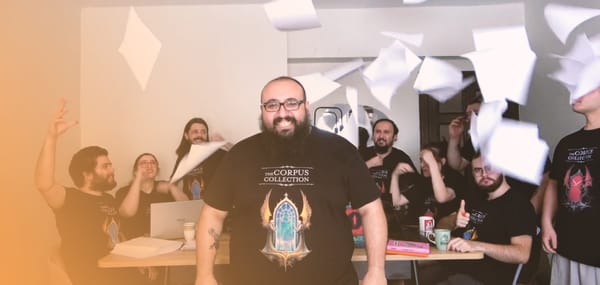Craft over Hype: Marco Piana’s Indie RPG Manifesto

Not everyone’s game design journey begins with a love affair with Dark Sun and Planescape. But for Marco Piana, those early Dungeons & Dragons 2nd Edition settings were nothing short of transformative — gateways into worlds of lore, imagination, and boundless creativity.
That fascination soon turned into homebrew campaigns, and eventually, into professional projects supported by a growing community of fans.
Today, Marco is the creator of Satzija’s Tome of Hags — a standout supplement that blends rich storytelling with practical tools for game masters. From launching small, one-euro Kickstarter campaigns to funding a graphic novel through a surprise hit adventure module, his path has been anything but conventional.
In this interview, Marco shares the lessons learned from crowdfunding, the joys of working with talented artists, the importance of staying passionate about your themes, and why he still prefers pen, paper, and Google Docs over flashy AI tools.
This is the voice of a creator who proves that success in the TTRPG space isn’t just about numbers — it’s about heart, community, and the joy of building something truly personal.
Onwards!
Could you tell us how your journey in tabletop RPGs began? What was your first project or memorable moment?
I have been an avid tabletop role-playing game enthusiast since I was 14. My first experience was with Dungeons & Dragons Second Edition, and I remember spending countless hours getting lost in the rules and the official lore.
Discovering settings like Planescape and Dark Sun was a life-changing experience; I was mesmerized by their incredible art and worldbuilding.
I began to follow in their footsteps almost immediately and started creating homebrew content for my own settings and campaigns. Not much has changed since then, haha!
What motivated you to start creating your own content for 5E and other systems?
Our first professional 5E publication happened almost unexpectedly. Caterina Capogrossi (Cat), the team's lead artist, and I were looking for additional funding to continue our graphic novel and worldbuilding project, Big Empty Blue.
Being both DnD fans with a lot of concept art and assets at our disposal from the graphic novel, we thought, "Why not try to crowdfund a fun DnD adventure based on the comic?" To our surprise, the adventure's Kickstarter performed better than the comic book and ultimately helped finance the worldbuilding behind the graphic novel and all our resources!
Do you consider yourself more of a writer, game designer, illustrator, or a mix of all three?
I see myself as a writer first and a game designer right after. All my decisions in game design are based on worldbuilding and lore rather than the other way around. Regarding illustration, I feel incredibly fortunate to collaborate with talented artists like Cat and Spikulec, especially since my drawing skills are practically nonexistent.
When did you first launch a project on Kickstarter, and what inspired you to try crowdfunding?
Our first crowdfunding project was in 2021 for the initial issue of our graphic novel. A mutual friend who had successfully run several campaigns recommended that we crowdfund our project, and thankfully, we followed his advice.
What lessons did you learn from your first campaign that influenced your future projects?
I am still very proud of our first project. Cat and I were both relatively new to crowdfunding but eager to understand how it worked. I took marketing and copywriting classes and started studying other successful campaigns to learn what motivates backers to support awesome projects.
Given our level of experience at the time, I think we did a good job. We even received Kickstarter's "Project We Love" badge! In hindsight, there are many things I would change about that campaign, but it helped us establish a strong foundation for all our future endeavours. No regrets.
How do you choose the themes for your adventures and supplements? Are they based on personal taste, market demand, or something else?
Inspiration and personal taste have always been my primary motivations. I am always happy to shape fun, creative ideas into something that might meet specific market demands, but I am not interested in creating something I am not passionate about just to fill an untapped niche.
Enjoying the process is my top priority, and I hope that our supporters can see this reflected in our content.
You often launch micro-budget campaigns (like 1€ adventures). What's your strategy behind this model?
Simply put, micro-campaigns are incredibly fun! They are small, manageable projects that require no investment other than your own effort and the artist's fees. Regardless of the outcome, I always consider them a success.
They provide an opportunity to test ideas, engage with new backers, and promote your work on the platform. If you can also earn some extra money in the process, that's a bonus!
Micro-campaigns played a crucial role in expanding our library and generating sufficient hype to promote our first hardcover manual, Satzija's Tome of Hags. They served as ideal stepping stones for the success of the Tome, so hurrah for micro-campaigns!
How do you keep production costs low while still delivering quality content?
I LOVE to write, which means I can create most of our resources independently. I only rely on other authors when my workload becomes too demanding due to my day job or personal life. This approach allows us to allocate extra budget to talented artists and layout designers.
In addition, by focusing on the quality of the resource itself and avoiding excessive additional merchandise (such as dice, DM screens, etc.), we have been able to maintain high standards while keeping the budget manageable. While we may consider offering merchandise in the future, the quality of the main resource will always be our top priority.
What marketing channels do you rely on the most when preparing your Kickstarter campaigns?
We are very lucky to have a wonderful community of followers and returning backers who appreciate our work and know what to expect when we launch a new project. They are the true driving force behind all our endeavours.
I'm also grateful for the opportunity to cross-promote and collaborate with other talented indie creators. For larger projects like Tome of Hags, we rely on industry professionals in online marketing, like BackerKit and Prelaunch Club.
Do you use paid advertising (Facebook Ads, Google, etc.) or mostly organic traffic and community outreach?
Yes, but for larger projects only. The mini-campaigns rely solely on organic traffic, returning backers, and a good dose of luck!
What's your relationship with influencers and content creators in the TTRPG space? Have you ever collaborated with them to promote your work?
I follow and appreciate the work of many content creators in the world of TTRPGs, worldbuilding, and literature at large. Due to the size of our past campaigns, I haven't ventured into collaborating with anyone yet. However, I hope to explore that possibility in the future!
How do you manage backer expectations and communication after a campaign ends?
For our projects, I believe it's crucial to communicate to our backers that ours is not an industrial, off-the-shelf product created by a large studio or corporation; it's a labour of love crafted by a small team of fellow RPG enthusiasts.
Our timeline may not match that of the industry giants, but in return, we offer a more personal and community-focused approach to each campaign. When we launch a project, the book isn't sitting in a warehouse overseas, ready to be shipped; we're still in the process of creating it.
This means that backers have the opportunity to help us improve it and make it their own!
What's your process for writing, designing, and illustrating a new TTRPG product? Any tools or workflows you swear by?
First comes the big idea. It must excite me to the point that I can't stop thinking about it. Then comes the structure, that is, how to turn this big idea into a reality. After that, it's market research time (to see if this idea is feasible and has any chance to withstand the RPG market).
Once all three stages are met, I start writing and commissioning cool visuals for the concepts I want to include in the new project (this is my favourite part).
Tool-wise, I am very basic: pen and paper, Google Docs, Excel sheets, and relaxing videogame soundtracks are my daily companions. My only pet peeve is the use of whiteboard apps (or physical whiteboards) for worldbuilding. I truly enjoy seeing the lore come to life.
How has your approach evolved between your earliest projects and your latest ones?
I am becoming increasingly comfortable with delegating tasks. There comes a moment when one must recognize that it's impossible to do everything alone. I find that delegating is both humbling and liberating.
It forces you to reflect and acknowledge: "I am good at or enjoy these tasks, but someone else could do better in these other areas."
You've created both adventures and compendiums. Do you prefer writing stories or designing mechanics/systems?
I like both equally. Both elements are essential in TTRPGs, and I believe that storytelling and mechanics are ultimately interconnected.
What's been your most successful project so far, and what do you think made it stand out?
The definition of success can vary. In terms of commercial achievement, Satzija's Tome of Hags has been the most successful title. However, when it comes to fun and the positive collaboration and response from backers, I believe Big Empty Blue #2 comes in a close second.
In my opinion, what sets our products apart is their uniqueness, our attention to detail, and our human-first approach towards our supporters and fans. Whenever we launch a new project,
I want our backers to feel that we are sharing something exciting that we genuinely want to create, rather than simply trying to sell a product.
What's your opinion on the use of AI tools in creating RPG content — from writing and art to automation?
Generative AI tools can serve as helpful echo chambers to explore ideas and test concepts during the initial brainstorming phase; however, beyond that, they do not play any role in our creative process and never will.
What advice would you give to indie creators who are just starting out and want to crowdfund their first project?
Begin with small projects, support the community of emerging creators, learn from industry leaders, embrace constructive criticism, and, most importantly, enjoy the journey (I mean it)!
What's next for you? Can you tease any upcoming campaigns or ideas you're developing?
As we finalize production for Tome of Hags, I am working with two RPG creator friends to develop something I have always wanted to write: a collection of magic items specifically designed for pets and familiars. The campaign is live on Kickstarter as we speak. Be sure to check it out!





